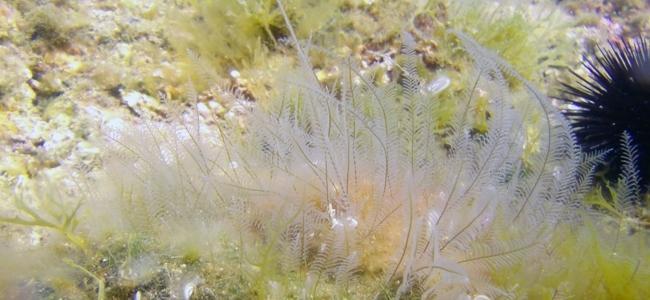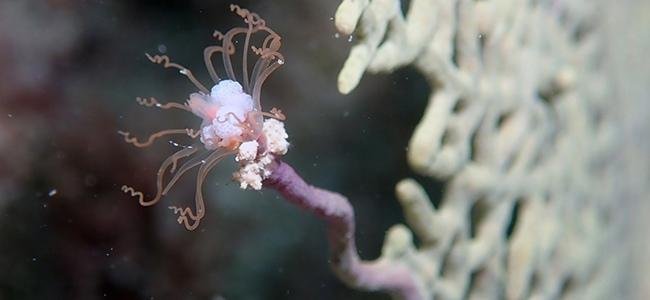The Hydrozoans are mostly marine species, which form colonies of individuals. During the course of their life cycle, specimens pass through an asexual phase in the form of a benthic polyp called a hydropolyp, followed by a reproductive phase in the form of a planktonic jellyfish.
During the benthic phase, the hydropolyps can generate colonies of a few centimeters in length, which are usually characterized by a chitinous cover, called perisarc. In these colonies, the different individuals usually have very different functions, such as defense, reproduction, feeding, ... Those hydropolyps with the function of capturing food, are called gastrozoa or trophozoa. They are the most numerous within a colony, since they capture prey (mainly zooplankton) to feed the entire colony. The hydropolyps with defensive functions are called dactylozoa, and are usually found in the vicinity of the gastrozoa. Finally, the gonozooids, gonophores or medusoids, are the hydropolyps specialized in reproduction.
In relation to the jellyfish phase, they are usually small (between 0.5 and 6 cm) and inconspicuous, which is probably why they are the least known group of cnidarians. Jellyfish are characterized by having 4 tentacles or multiples of 4, with which they are able to capture their food, which can even be small fish. The edge of the jellyfish has a fold called veil. It is also noteworthy that they may have ocelli on the upper part of the bell, which allow them to have some notion of the brightness of the environment.
There are approximately 3,000 described species belonging to the Hydrozoa group, classified into 5 orders (Hydroida, Trachylinae, Siphonophora, Chondrophora and Actinulida). The majority of Hydrozoans are marine species, although it is the only group of cnidarians in which it is possible to find freshwater species, such as hydras.



